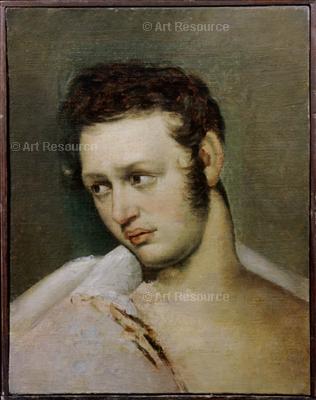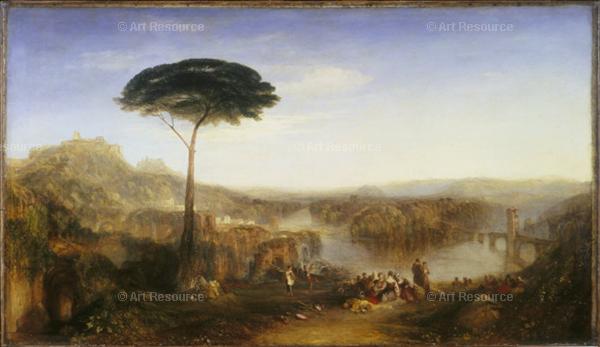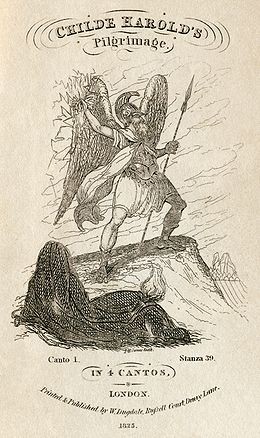Where is Byron when we need him? This is what George Gordon Lord Byron, sexual magnet and progenitor of the Byronic hero, looked like:
//

/
Oh, the melancholy tilt of the head, the dark eyes shining with sensitivity, his pale skin so delicate, so caressable! And that mouth! Small wonder Byron was the toast of London’s social circuit in 1812, celebrated and sought after. Woman, especially, thrilled to the handsome, capricious, lame-footed man who exploited female emotionalism with calculated aforethought:
Who does not write to please the women?
Fast forward two centuries to those disembodied blowouts in the ether between coeds and congressmen. This is what we get nowadays on Twitter:
//

//
The optics have declined considerably. The mouth is all wrong. But then so is much else. Let’s not dwell on the rest. What really prompted this post was the 1930 edition of André Maurois’ Byron, translated from the French by Hamish Miles. It is a fine corrective to the tendency to wring our hands—well, my hands—over the culture of celebrity. Its fallacies, seductions and excesses have been with us awhile. Reading Byron, you cannot help but wonder when the culture of celebrity did not exist. Human nature certainly has not changed, only the technology for broadcasting its lapses.
Here is Maurois on the electric excitement over Byron’s narrative poem Childe Harold’s Pilgimage:
The whole of London talked of Byron, and only of Byron. Crowds of famous people begged for introductions or left their visiting-cards. The carriages in front of his door in St. James’s Street impeded the traffic. In one bookshop there was a copy of Childe Harold exhibited which had been specially bound for the Princess Charlotte, daughter of the Regent.
buy flagyl Canada https://langleyrx.com/flagyl.html no prescription
The Prince Regent himself had Byron presented to him and spoke to him at length of poets and poetry. At Mayfair dinner conversation seemed to be nothing but one long, incessant murmur of “Byr’n . . . Byr’n . . . Byr’n . . . .” Every season in those days had its lion, political, military, or literary; and Byron was the unrivalled lion of the parties of 1812.
Byron’s work inspired Turner, who took his turn illustrating the famous pilgrimage:
//

//
Whatever the real-life moral similarities or differences between an authentic womanizer (Byron) and a virtual one (Weiner), save it for another day. What matters to me here is the abyss between the art they each inspire. One glance does the trick:
//

Heroism—intestinal fortitude— is the keynote of the book cover. Weiner’s works, on the other hand, excites nothing but mockery. Photoshop was made for mockery. Below is one wag’s response to a masturbatory tweet in which the congressman presents himself working for the nation in cape and tights:
//

//
Childe Harold, brooding, aspiring, and introspective, looked into himself. Weiner, by contrast, looks elsewhere:
//
//
Byron was hailed as hero by the Greeks for his part in Greece’s rebellion against the Turks. He ended his career by dying of fever in his sleep during a storm over Missolonghi.
The fatal tidings had not yet reached the Greek soldiers and shepherds who had taken refuge indoors; but like their ancestors they believed that the death of a hero came heralded by portents, and as they listened to the prodigious fry of this thunder, they murmured to each: “Byron is dead.
buy ivermectin Canada https://langleyrx.com/ivermectin.html no prescription
“
Weiner’s career will not end. It will just go on hold for a time while he goes into therapy. What is that old line we all know? Something about “not with a bang but a whimper.”
//
© 2011 Maureen Mullarkey



